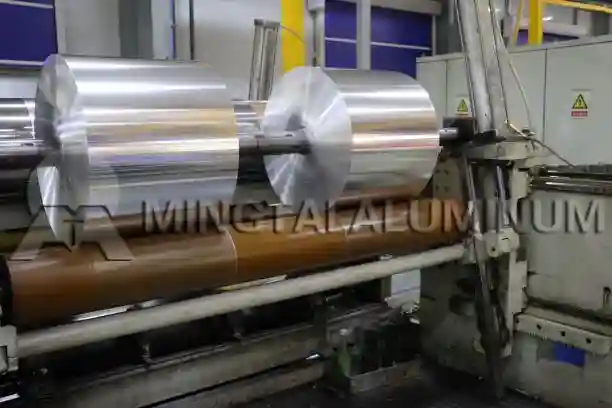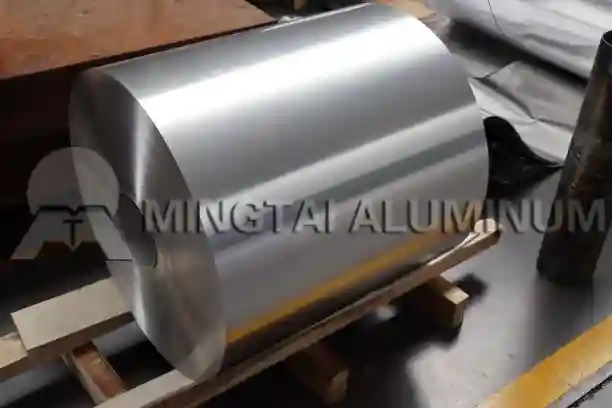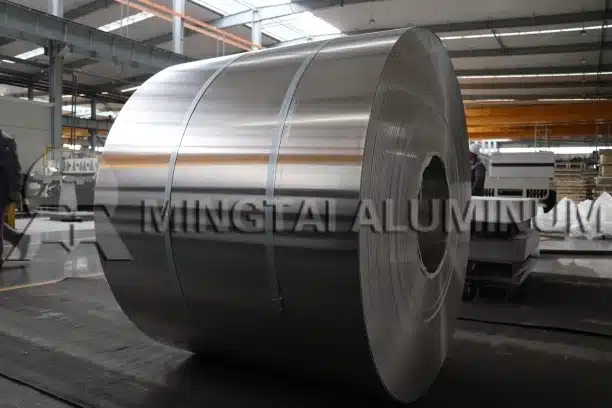
The packaging world is flipping upside down. Folks want stuff that’s safe, earth-friendly, and light as a feather. This is shaking up what materials companies pick. 1060 aluminum foil is widely used for household foils, food container lids, pharmaceutical blister packs, and capacitor foil, thanks to its high purity and excellent ductility. It’s strong, bendy, and super recyclable, making it a favorite for 2025 to 2030.
Quick Overview
1060 aluminum foil is a popular choice for applications in household packaging, food storage, and pharma packaging. It shapes easily and resists corrosion, making it ideal for daily-use packaging. This means companies can use thinner foil but still produce durable household rolls, food lids, or blister packs. The next few years look awesome for 1060 foil because:
- More people are grabbing canned drinks and quick meals.
- New rules are pushing for recyclable, single-material packaging.
- Smarter ways to make foil are boosting quality and speed.
But it’s not all smooth sailing. Material costs can bounce around. Food safety rules keep shifting. Plastics are still in the game. Companies that juggle costs, stay green, and follow the rules will come out ahead.
Tech and Product Scoop
Why 1060 Alloy Rocks
1060 foil blends flexibility, rust-proofing, and toughness. It’s just right for packaging jobs.
| Alloy | Key Uses | Strengths | Limitations |
| 3003 | Lunch boxes, honeycomb materials | Good corrosion resistance | Limited deep drawing ability |
| 3004 | Beverage cans, closures | Higher hardness, better load capacity | Slightly less ductile |
| 5052 | Marine parts, structural components | Excellent corrosion resistance | Less suited for thin packaging |
| 1060 | Household foil, food lids, pharma blister packs, capacitor foil | High purity, excellent ductility, conductivity, corrosion resistance | Lower strength, not suited for deep-drawn beverage cans |
Thickness, Width, and Tempers
- Thickness: Thickness: Typically 0.018–0.2 mm for household and pharma foil, with thicker gauges available for industrial uses.
- Width: From 100 mm for lids to 2650 mm for big sheets.
- Tempers: Choices like O, H14, H18, H19, H24, and H26 let you tweak strength and shaping.
Surface Treatments and Printing
You can treat 1060 foil with anodizing, coatings, or laminates to fight rust. It also takes sharp, colorful printing like a champ. This makes it awesome for packaging that looks cool and survives shipping.
What’s Driving the Market
Demand Is Booming
- Drinks: Non-carbonated stuff like flavored waters and energy drinks is super popular. Most ready meals and frozen foods require durable containers, and 1060 foil is widely chosen for food lids, trays, and blister packs.
- Food: Demand for ready meals, frozen food, and safe pharmaceutical blister packs is rising quickly. 1060 foil is widely used for food trays, lids, and PTP packaging.
Recycling and Green Vibes
Aluminum is a recycling superstar. It takes 95% less energy to recycle than to make new aluminum. That’s why 1060 foil is a go-to for brands and regulators who love the circular economy. Unlike layered plastics, aluminum stays top-notch even after tons of recycles.
Thinner and Greener
Everyone’s into lightweighting—making foil thinner but still strong. It’s a hot trend. 1060 foil can be super thin, which cuts shipping costs and pollution. It still keeps food sealed and safe.
Rules, Trade, and Big-Picture Stuff
Food Safety Rules
Global regulators are strict about food packaging:
- FDA (United States): Caps how much aluminum can leak into food.
- EFSA (Europe): Sets rules for recyclable packaging.
- CFDA (China): Wants clear records of how materials are made.
1060 foil passes these tests if it’s made carefully.
Trade and Tariff Drama
Trade rules can mess with 1060 foil’s price and supply:
- U.S. tariffs might make aluminum pricier for can makers.
- EU rules could push companies to buy local to cut emissions.
- Asia-Pacific trade deals might keep China’s exports rolling strong.
Green Policies
Governments are rolling out Extended Producer Responsibility (EPR) rules. These make brands ensure their packaging can be recycled. Aluminum foil is a winner here since it’s recyclable forever. Plastics? They’re hitting roadblocks with disposal rules.
Where the Market’s Headed (2025–2030)
Asia-Pacific: The Big Dog
China rules aluminum production, from mining to foil. Companies like MINGTAI ALUMINUM keep prices low and quality high. We are also pros at shipping worldwide, making this region a major player.
Europe: All About Green Goals
The EU is gunning for zero-waste packaging by 2030. Aluminum foil beats plastics since it’s easier to recycle and fits eco-label rules. Europe’s recycling setup is top-tier, grabbing tons of cans and containers.
North America: New Tastes
North America’s food and healthcare markets are expanding, with greater demand for frozen meals, takeaway packaging, and blister packs. 1060 foil is gaining ground as a safe, non-reactive option in these sectors.
Up-and-Coming Markets
- Latin America: Growing cities and more canned drinks mean bigger demand.
- Middle East & Africa: New buildings and food imports are sparking needs for aluminum foil.
Who’s Winning the Game
- Big players: Companies like Novelis, Constellium, UACJ, and Alcoa lead with their all-in-one setups and global reach.
- Chinese stars: Firms like MINGTAI ALUMINUM compete with huge production, low prices, and growing export networks.
- Tech upgrades: New machines make ultra-thin foil with steady quality. That’s key for fast can-making lines.
- Real-world proof: Real-world proof: Leading food and pharmaceutical companies rely on 1060 foil for blister packs, food lids, and household rolls, demonstrating its industrial reliability.
Smart Moves to Make
For Buyers
- Team up with suppliers who track materials, have certifications, and deliver on time.
- Watch trade and tariff changes to tweak where you buy from.
- Go for recyclable stuff to hit green goals.
For Manufacturers
- Shine with cool coatings, sharp printing, and following rules like ISO, RoHS, and REACH.
- Spend on lightweighting tech to save money and help the planet.
- Link up with growing markets to grab new chances.
For Investors
- Bet on companies diving into eco-friendly tech.
- Pick suppliers ready to ship globally with proper certifications.
- Look at aluminum’s future as it takes over from plastics.

From 2025 to 2030, 1060 aluminum foil will keep shining in packaging. It’s recyclable, strong, and works for tons of stuff like drinks and food. Sure, there are bumps like price swings and new rules. But things look really good overall.
MINGTAI ALUMINUM is a top Chinese supplier for 1060 and similar alloys. We nail quality, keep prices fair, and ship reliably.
Want tech details, custom options, or current prices for 1060 aluminum foil? Hit up MINGTAI ALUMINUM today.
FAQ
Q: What certifications are important for 1060 foil in food and pharma packaging?
A: Buyers should check for FDA, EFSA, and GMP compliance, along with ISO certifications, to ensure the foil meets international safety standards.
Q: Could global drama like trade fights mess with 1060 foil supply?
A: Totally. Trade spats or mining hiccups could bump up prices or cut supply. Companies might look to other places to keep things steady.
Q: Does 1060 foil fit with biodegradable packaging trends?
A: It’s not biodegradable itself. But it plays nice with green coatings. This helps brands go eco-friendly without ditching plastics completely.
Q: Are new rules or certifications coming for aluminum foil in food packaging?
A: Yup. Groups like ISO are pushing tougher green standards, like tracking emissions. 1060 makers need to keep up to sell in strict markets.




